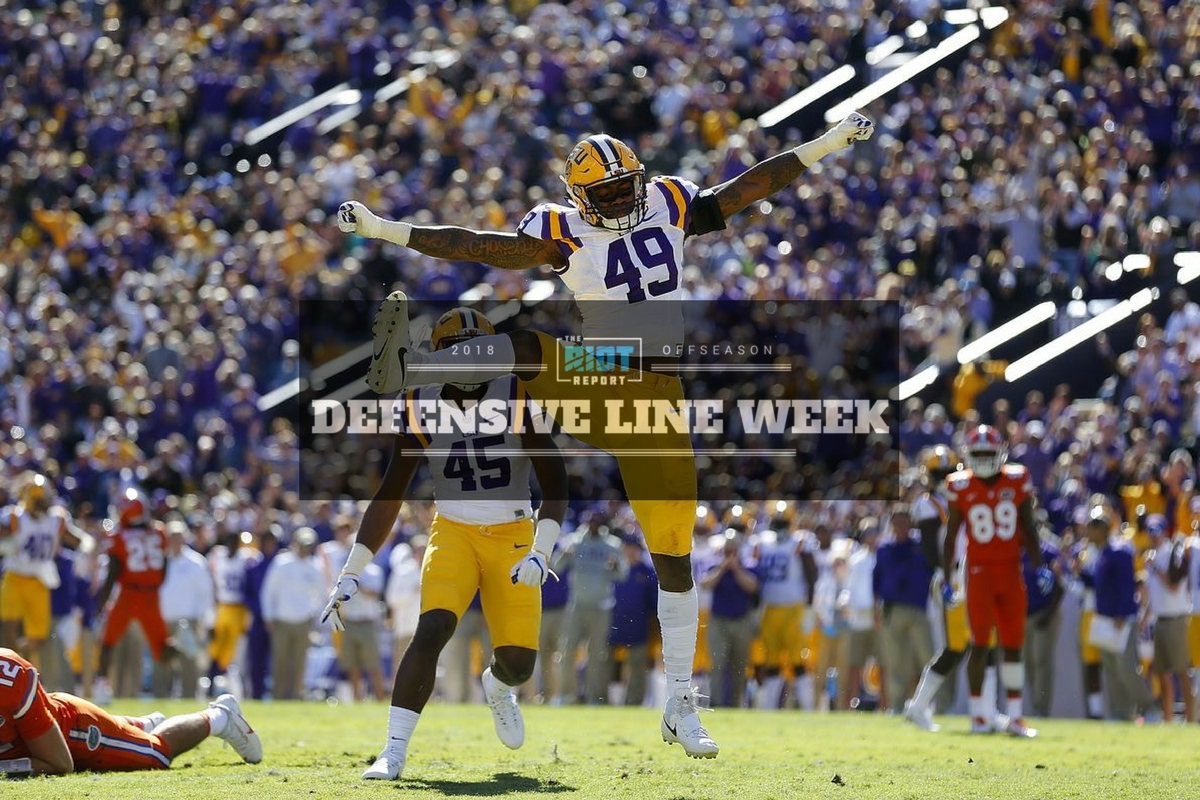Each week this offseason, we’ll be focusing on one position and how the Panthers may choose to address their needs; whether they’re in the market for an upgrade at starter or just a reliable backup, every player on the 53-man roster is going to be important in 2018.
This is Defensive Line Week.
Arden Key is one of the hardest players to tie down in recent memory, for a wide range of reasons. There are a number of off-the-field concerns but due to a lack of detailed information and suitable expertise, these will not be dealt with here besides those factors which affected him on the field. The most notable of these issues was the significant fluctuation in his weight. Key weighed in at the combine at 238lbs, but reportedly played as heavy as 280lbs during the season; it’s hard to say if and how these weight fluctuations affected his play, but it certainly adds to the significant cloud of uncertainty about Key’s ability. The other major question mark was how Key was used; he was largely used out of a two point stance and was asked to drop into coverage on about a third of plays in some games. LSU even asked him to line up at DT at times with limited success but what they very rarely asked him to do in 2017 was line up as a 4-3 DE and attack the tackle in pass protection. Given his success in this usage in previous seasons this is very surprising, and only makes it harder to tie down just how good Key is.
The Good Bits
Arden Key’s upside has always been his ability to bend the edge, as can be seen on the following play (For reference, Key wears #49):
He was surprisingly not used as a pure speed rusher in 2017, so it is hard to get an idea of just how fast he is, but it’s definitely fair to say that this will continue to be a strength going into the NFL. What is more important than his pure speed is the way in which he is able to dip and bend around the edge; on each of the following plays, Key uses a decent inside arm to get outside the tackle and then bends around the edge to get to the quarterback.
There were some inconsistencies in Key’s play height when doing this, as can be seen on the next play, but the ability to turn the edge is still evident:
This upside is tempting, but with Key, there are simply so many questions about the complexities of his pass rush.
The Details
For pass rushers wanting to be seen as anything more than one-trick ponies, it is important for them to be able to win when their initial pass rush move fails. One way of almost certainly guaranteeing that the second move won’t work is if the offensive lineman is able to get his hands inside the frame of the rusher; this is something that Key allows to happen far too often. On plays like the following, his hands are far too high and are completely ineffective at preventing the tackle from grabbing him inside the frame:
He also fails to use his speed effectively in creating push when faced with a well-positioned blocker; he should be able to use his momentum to drive the blocker back into the quarterback, but all too often tries to dodge the block instead, such as on this play:
Some of this failing might come from his inconsistent pad level, as while he is generally decent in this area, at times he stands up near vertically and so all of his momentum is easily pushed upwards by the blocker he is facing:
What is also concerning is how Key has failed to develop much of a pass rush beyond speed. For players with the speed to force tackles into a full slide, enormous value is then placed on being able to then beat those who overcommit to the outside. Too often, Key failed to even attempt to do this and tried to simply outrun the tackle around the edge with limited results:
Some times he at least tried to fake that he was going inside just to freeze the tackle but given how rarely he did actually look to beat the tackle inside, this fake was often not taken seriously, such as here:
On the rare occasions that he did attempt to go inside of the tackle, the move was often poorly executed and underdeveloped, such as this attempt at an inside swim move:
He did occasionally flash an outside swim move to get around the outside of a tackle, such as here:
But if he is unable to force a tackle to cover for the inside move, they will be able to fully commit outside to stop the speed rush without fear of being punished. The way in which Key was probably most successful in terms of inside moves was simply a frantic attempt at multiple moves in order to force the tackle out of position. On the following play, Key drives inside before spinning outside where the tackle then overcommits, allowing Key back inside:
This is not a tactic that will work against good NFL tackles who will simply have the patience to wait for Key’s moves to develop. In order to be effective at the NFL level, Key will need to develop a far more detailed and nuanced pass rushing repertoire and teams would be wise to work him out in order to asses how likely they believe he is to develop further. While it is concerning that Key isn’t more developed at this stage, he was so poorly used at LSU that it isn’t hard to believe that his lack of nuance is due to poor coaching.



